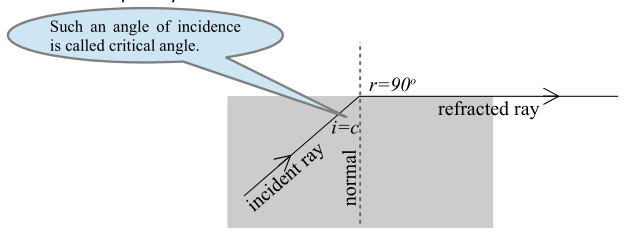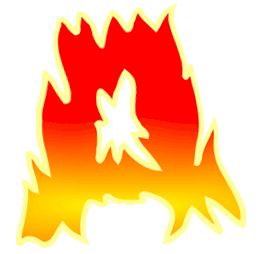-
Beam: It is a bundle of rays.
-
Shadows: They are the dark areas that are formed when light is blocked.
-
We can see
-
luminous objects because they produce light
-
non-luminous objects when they reflect light
-
-
Regular and irregular reflections
-
Smooth, shiny and polished surfaces (e.g., mirror) give a regular reflection.
-
Rough, dull and unpolished surfaces (e.g., paper) give an irregular reflection.
-
-
Second Law of Reflection: The angle of incidence is equal to the angle of reflection.
i = r
-
Plane mirrors
-
Characteristics of image in a plane mirror
-
Same size as the object.
-
Same distance behind the mirror as the object in front of the mirror.
-
Upright
-
Virtual
-
Laterally inverted ( i.e., left appears right and vice versa.)
-
-
Applications of plane mirrors
-
Eye-sight testing in a small room
-
Removing parallax error in instrument scales
-
-
-
Real Image: It is an image that can be formed on a screen because rays converge on image.
-
Examples: Projector / Photocopier / Camera
-
-
Virtual Image: It is an image that cannot be formed on a screen because rays only appear to come from image.
-
Examples: Magnifying glass / Reflection in a mirror
-
-
Refraction: It is the bending of light when it enters or exits a medium.
-
When light slows down it bends towards the normal………….when light speeds up it bends away from the normal.
-
Second Law of Refraction: The ratio of the sine of the angle of incidence in one medium to the sine of the corresponding angle of refraction in the other medium is a constant value.

-
Refractive index (of a medium): It is the ratio of the sine of the angle of incidence in vacuum (or air) to the sine of angle of refraction in the medium.

- You use the formula n = (sin i / sin r) when light goes from vacuum (or air) to an optically dense medium
- You use the formula (1/n) = (sin i / sin r) when light goes from an optically dense medium to vacuum (or air)
- Value of n is always greater than 1.
- Greater the value of n, greater is the refraction (bending).
-
Consequences of refraction
-
Swimming pools appear shallower.
-
Objects appear bent.
-
Mirages
-
Rainbows
Note: Rainbows are due to refraction, total internal reflection and dispersion of white light.
-
-
Critical angle: It is the angle of incidence in the optically denser medium for which the angle of refraction in the optically less dense medium is 90o.

-
Total internal reflection: All the ray reflects back into the denser medium when the angle of incidence in the optically denser medium is greater than the critical angle.
-
Application in fibre optic cables: Information is passed in the form of (visible) light that shows total internal reflection. Optical fibers are used in telecommunications because they have following advantages over copper wires:
-
-
more data per second
-
more secure
-
less attenuation (so boosters are further apart)
-
less interference (e.g., cross-talk)
-
-
-
Go back to table of contents



